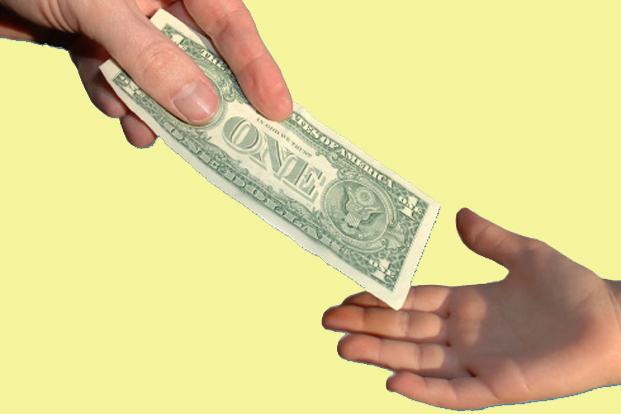Ryan is financially savvy, you could say. When he discovered that his mom had taken a hundred dollar bill from his wallet, he immediately demanded she pay him back – with interest.
“Now you owe me a hundred and one dollars,” he said.
In another kid-defying moment, he seemed to regret buying a toy.
“I spent mucho dinero today,” he relented after a visit to Toys R Us.
Ryan is 5 years old. These scenarios sent my mind into a dizzying spell. I couldn’t wrap my mind around a kid showing any remorse or regret for obtaining a toy, perhaps because my kids seem to have no conscience when they make blows and dents in my wallet. But upon deeper consideration, it made sense. There was a reason why Ryan, the financially conscious kindergartener, was the way he was.
Ryan’s money was his money. He has a Spider Man wallet with bills in it to prove as much. What didn’t get deposited (yes, he has his own checking account), was discretionary funds he stored in his wallet and could spend with mom or dad’s okay. There was a sense of ownership that seemed to make him accountable and startlingly aware of what he spent – or what his mom borrowed.
Suddenly, it dawned on me why all of my incessant talk about how it’s not good to waste daddy and mommy’s money seemed to go in one wallet and out the other. I tried all of the arguments too, from we don’t have money to buy all those toys, to don’t you want food on the table? And in all of this, I had failed to ignore the cardinal rule: the way to motivate people is to create a vested self-interest. Why did I think kids were any different?
According to a T. Rowe Price survey, kids who receive an allowance are more money savvy. Allowance puts money direct into the hands of your kids, transferring ownership from mom and dad to the child. This makes them the gatekeepers. They’ll begin to weigh the pros and cons of depleting funds. In short, allowance is a great educational tool. Through allowance, you can teach your child about saving, sharing and smart spending.
There are many variables, however, to consider when it comes to allowance. What’s a good age to start? Should you make them earn it? What forms of contributions should merit payment? And how much is appropriate? What each respective parent decides is the right choice. But in formulating the right decision, here are some things to consider.
- When should I start? Many experts recommend starting around kindergarten or first grade. While kids can understand broadly how money works before then, they won’t understand concepts until then. “I don’t think at 6, you are too young to learn about money,” says Bruce Helmer, co-founder of Wealth Enhancement Group and author of “Real Wealth: How to Make Smart Money Choices for What Matters Most to You,” adding that his children were expected to use one-third of their allowance for short-term spending, another third for savings and the final third for charity.
- Should allowance be earned? Working for your allowance is a great way to teach your child about the value of a dollar. But where opinions differ is whether children should get paid for things they’re expected to do around the house. On the one hand, it’s a way to motivate kids to clean after themselves or be on good behavior. But others believe children should learn that they need to contribute to the family without getting paid because that’s part of being in a family. Instead of attaching allowance to chores, another option is to encourage kids to be entrepreneurial. “Children can cut grass, cat-sit, babysit, and that sort of thing, to make money from the neighbors. Then they have to learn negotiation and a work ethic,” says Clare Levison, author of “Frugal isn’t Cheap: Spend Less, Save More, and Live Better.”
- What should they do with allowance? One of the best lessons they can learn from having allowance is saving. If you can help your child put some of his allowance away to save, they will learn a skill that eludes many grown ups early on. You can also encourage your child to share some of it with charity. You can split allowance into three parts: savings, spending and sharing, or you can simply ask your child to give what’s in their heart to give.
- How much should I give? Not more than you can afford. Outside of this parameter, it’s really up to each parent what he or she deems to be appropriate. While a kindergartener may have no need for $20 a week, remember that a good portion of that can be put into savings or given to charity. It doesn’t have to go towards spoiling their spending habits.
This article was first published in Creative Child magazine.



